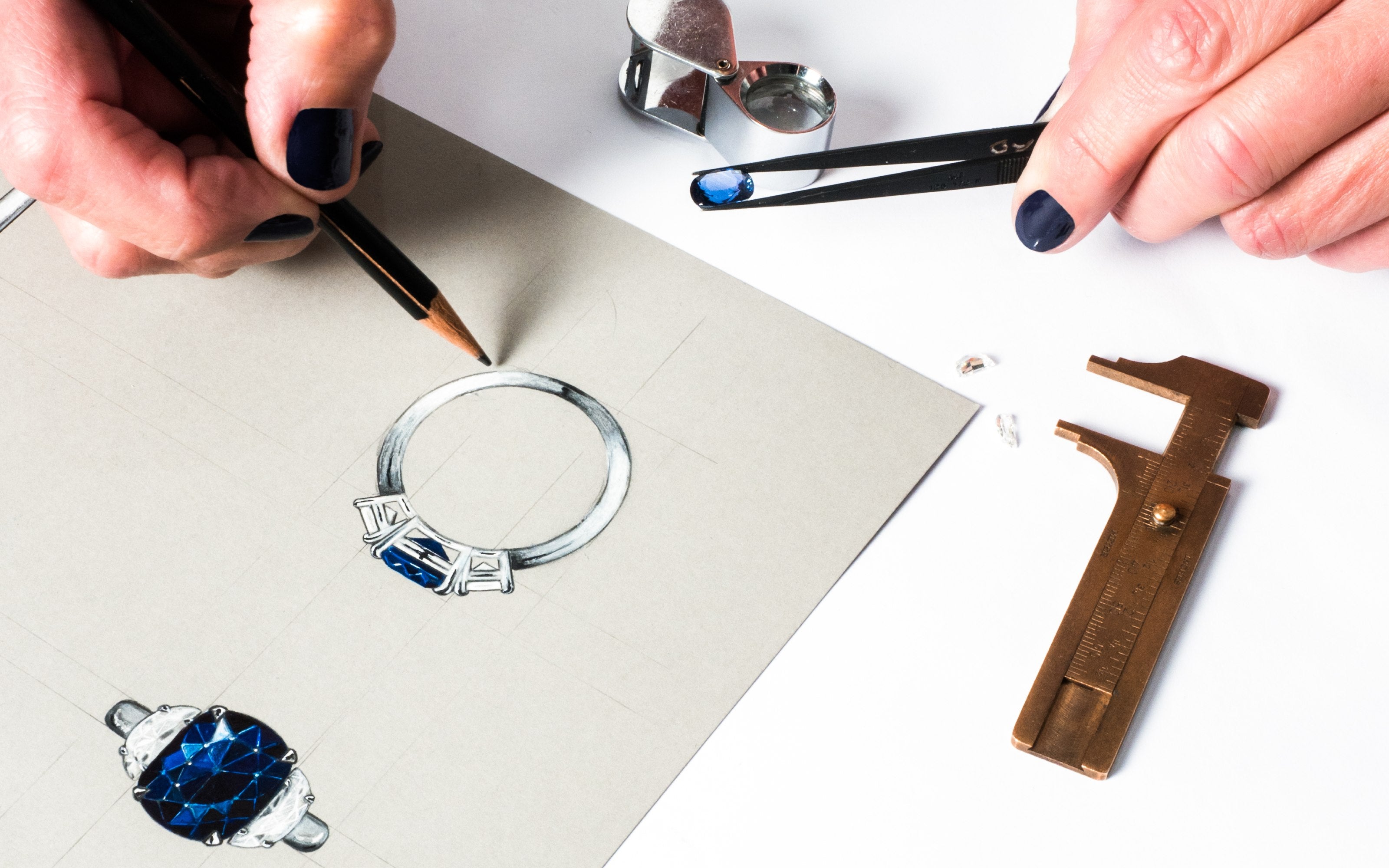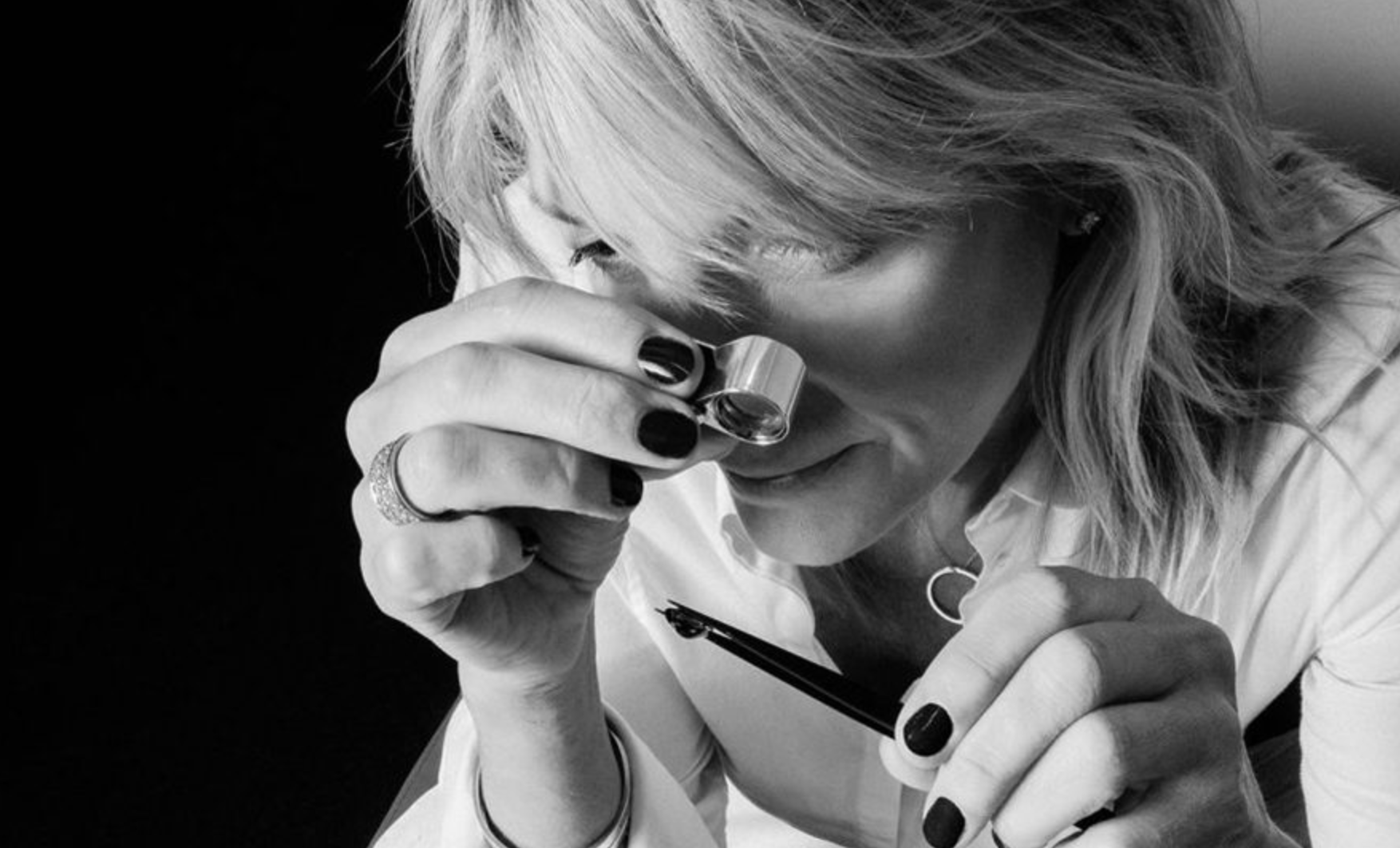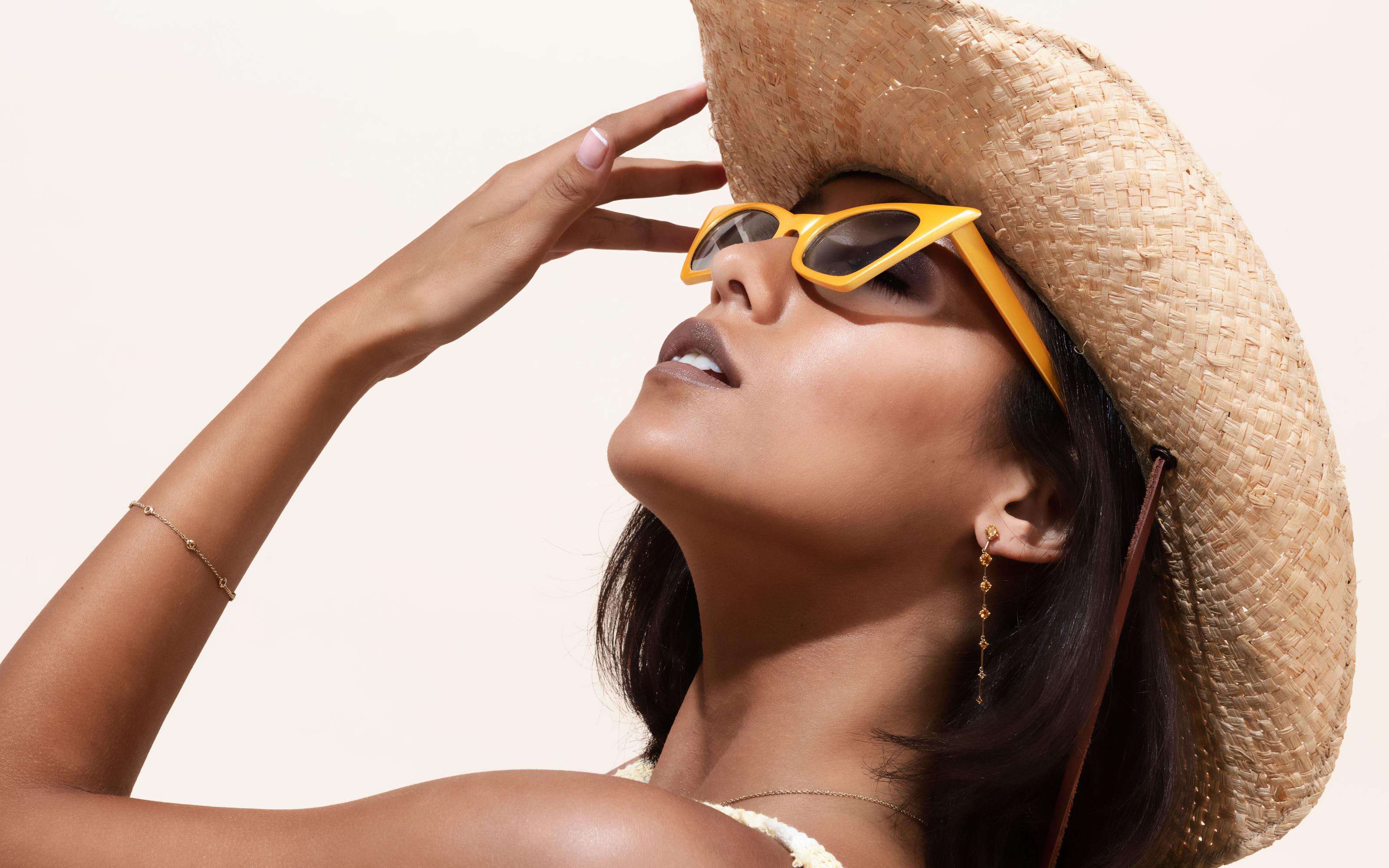
Essential guide to choosing diamonds & buying the perfect engagement ring
Navigating the world of diamonds can be daunting, especially when the gemstone you choose symbolises a lifelong commitment. With multiple variables to balance — cut, carat, colour, clarity and more — it pays to understand the technical fundamentals before making such a significant investment.
Drawing on three decades as a qualified gemologist and independent jeweller, Louise Sinclair is committed to demystifying the process and ensuring you enjoy every step of designing your bespoke piece. Read on for her expert framework on confidently selecting a diamond and commissioning the perfect engagement ring.
How to choose a diamond
1. Know your 4Cs: Cut, Carat, Colour & Clarity
These four metrics form the cornerstone of any diamond appraisal. Striking the optimal blend within your budget is crucial to achieving both brilliance and value. Louise will walk you through each criterion, helping you prioritise according to your personal taste and financial plan.
Cut
This defines a diamond’s proportions, facet symmetry and polish, not its outline. An expertly executed cut maximises the stone’s ability to capture and reflect light, yielding that signature fire and scintillation. Precision cutting demands exceptional skill, as even minute deviations in angle or symmetry can diminish brilliance.

Carat
Carat measures weight, not size—1 ct equals 0.2 g. Larger stones command exponentially greater value per carat due to their rarity. Bear in mind that “carat” differs from “karat,” which denotes gold purity.

Colour
Diamonds are graded from D (entirely colourless) to Z (noticeable yellow tint). Less hue equates to higher rarity and cost. Genuinely colourless diamonds (graded D to F) are very rare, therefore highly desirable but also carry a higher price tag. Louise exclusively sources stones of H grade or above, ensuring your diamond remains free of distracting tints while offering superior value.

Clarity
Natural inclusions and blemishes render each diamond unique. The clarity scale runs from IF (Internally Flawless) to I3 (Included). Fewer imperfections yield higher grades and and prices. Louise’s selection never dips below VS2, striking a balance between visual purity and practical cost.

In Practice: You may favour a slightly lower carat for a superior cut, or accept a minor clarity variation to achieve a desired colour. Louise’s expertise helps you calibrate these trade-offs to suit your priorities.
2. Choose your diamond shape
Beyond the classic round solitaire, an array of “fancy” cuts — oval, emerald, pear, cushion and more — offer distinctive character. These shapes often incur higher per-carat prices, as they require greater rough-stone retention and stricter colour/clarity standards. Choose a silhouette that resonates with personal style and complements the wearer’s hand.

3. Assess polish, symmetry and fluorescence in line with budget and size
Once cut, a diamond’s surface finish and internal structure further influence its appearance:
Polish gauges the smoothness of facet surfaces. Superficial marks are inevitable, but should never penetrate beneath the exterior. The condition and smoothness of the stone’s surface are determined by the cutter’s polishing skills.

Symmetry evaluates facet alignment and proportional accuracy. One thing to note is that a cutter may sacrifice symmetry to avoid inclusions or retain weight when crafting the stone as that will retain more of its value.

Both polish and symmetry are rated on a scale from Excellent to Poor and Louise recommends opting for Excellent or Very Good stones.
Fluorescence describes the UV-induced glow some diamonds emit. While generally subtle, it may slightly soften or enhance perceived brightness in certain lighting. Often a debated topic and studies seem to suggest that fluorescence makes very little difference to the appearance of a stone, it may be something you wish to consider when choosing your perfect one.
When working to a tighter budget, it helps to know where small concessions won’t diminish your diamond’s sparkle. Both symmetry and polish influence light performance and sparkle, but polish has a more direct effect on brilliance, so we recommend securing an Excellent or Very Good polish grade first. Bear in mind that “perfect” symmetry is rarely attainable in fancy shapes.
4. Make sure you obtain a diamond grading report
For diamonds over 0.50 ct, always insist on certification from a globally recognised laboratory (GIA, HRD, IGI or EGL). These reports detail all the 4Cs alongside additional characteristics, serving as your gemstone’s definitive “passport.” Every diamond Louise procures arrives GIA-certified, complete with documentation you can trust.

Buying the perfect engagement ring
Armed with diamond knowledge, turn your attention to the surrounding design elements that will define the finished ring.
5. Define your budget
Your total spend determines the range of diamond grades, metal choices and design intricacy. A clear budget conversation early on helps Louise present options that maximise both beauty and value.
6. Choose the setting
The setting secures and showcases the centre stone while shaping the ring’s aesthetic. From classic solitaires to elaborate halo or three-stone designs, each option offers a unique interplay of light and form.

7. Explore coloured gemstones
While colourless diamonds are timeless, sapphires, rubies and emeralds are gaining popularity for engagement rings. There is an increasing trend and desire to own something that is deeply personal as well as expressive and striking. A famous example is Catherine, Duchess of Cambridge’s sapphire and diamond cluster ring, previously belonging to Lady Diana.
Compared to diamonds, coloured stones provide more design versatility and usually come at a lower cost. With Louise’s expertise, you can create a bespoke piece that’s both striking and deeply personal.

Above: A platinum sapphire cushion and diamond half-moon shoulder stones in a claw setting — a bespoke commission made by Louise Sinclair.
8. Incorporate side stones
If you want a more elaborate design to the single-stoned ring, you can add side stones to complement the centre diamond. Things to consider would be: choosing matching diamonds that are within the same colour grade or two; alternatively, coloured diamonds as side stones really emphasise the centre stone; proportions of the stones in relation to the wearer’s hand; and last but not least, using different coloured metals for the centre and side stones to really make them stand out.
You might match side-stone colour grades or pair complementary hues, experiment with mixed-metal settings, and choose proportions that flatter the wearer’s hand.
9. Pick a metal for the mount
Choosing a metal for the ring goes hand-in-hand with choosing the setting, and given an engagement ring’s lifelong wear, it must prioritise durability. Typically, the metals of choice are 18 karat white, yellow or rose gold, or a combination of these, as well as platinum, as they each lend distinct hues and longevity. The chosen metal not only frames the diamond but also affects its visual warmth and long-term maintenance.
9. Prioritise her style
Most importantly, the ring should reflect her taste and lifestyle, because after all, she’ll be wearing it every day for the rest of her life! Reflect on her existing jewellery preferences bto guide every design decision. For example:
- What kind of jewellery does she usually wear?
- Does she prefer gold or silver?
- Is her overall style more classic and understated or modern and bold?
- Is her current jewellery simple or ornate? Chunky or delicate?
- Is she more of an outdoorsy, active person, or does she tend to dress fashionably and likes to make a statement through her jewellery?
10. Finally, confirm her ring size!
If you’re unsure, borrow a ring she already wears: trace its inner circumference on paper, press it into a bar of soap to capture an impression, or place it on your finger and mark where it stops.
____
Ready to Begin?
With Louise Sinclair’s three decades of gemological experience and expertise, crafting your ideal engagement ring becomes an empowering journey rather than a daunting task. Contact Louise today to schedule your bespoke consultation and transform your vision into a shining symbol of your commitment.



